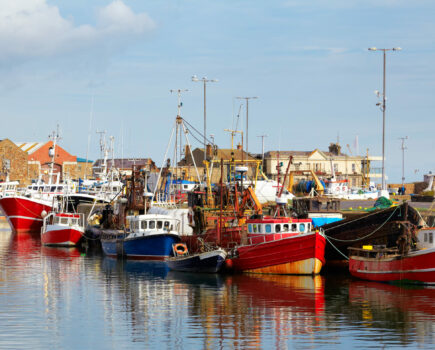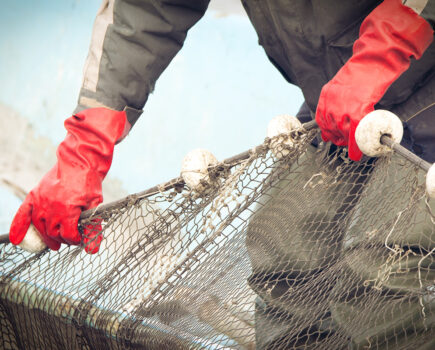Mixed bag as Commission aims for MSY by 2020.
Industry leaders and fisheries officials are preparing UK negotiating priorities for the annual Fisheries Council due to be held on 11-12 December, reports Tim Oliver.
The Commission has published its proposals for TACs for 2018 for a number of stocks in the North Sea and NE Atlantic.
Of the main stocks of interest to UK and Irish fishermen, the Commission has proposed increases in 11 TACs and cuts in 13. The TACs of eight stocks remain the same as in 2017. There are no proposals yet for another 14 of the stocks that are of interest to UK and Irish fishermen that are subject to late scientific advice or ongoing negotiations, as well as the North Sea stocks shared with Norway.
The proposals do not include stocks subject to negotiations with third countries such as Norway, as well as 14 stocks subject to late scientific advice or continuing negotiations. They also do not include top-ups for stocks that will be subject to the landing obligation/discards ban in 2018.
The Commission said 44 stocks are now fished at MSY levels, up from only five in 2009. The objective under the CFP for all stocks to be fished at MSY levels by 2020. The Commission said: “As the legally binding deadline for the 2020 target draws closer, the margin for setting quotas that are not sustainable is narrowing. The Commission is working with member states to support the fishermen in this transition.”
The Irish Sea stands to benefit from big proposed increases in cod (100%) and plaice (63%), and herring (70%), but is hit by a proposed cut to a zero TAC for whiting. Another big proposed increase is 26% for Bristol Channel/Celtic Sea (7fg) plaice.
As well as Irish Sea whiting, a zero TAC is also proposed for West of Scotland whiting and a continuation of the zero west coast cod TAC. A proposed 26% in the Nephrops TAC on the west coast of Scotland is also causing concern. A zero TAC is also proposed for Celtic Sea plaice (7hjk).
Other proposed heavy cuts are 62% for Celtic Sea (7ghjk) herring and 19% for northern hake (North Sea, West of Scotland, and all of area 7).
• The Commission has also proposed to ban fishing of eels in EU waters until there is clear evidence of improvement of the state of the stock.
Fisheries commissioner Karmenu Vella said that although some of the EU’s key stocks are healthier and more abundant, there was no room for complacency. He said: “We must continue our joint efforts to manage our seas and oceans in a way that works for the environment, for the economy, and for future generations.”
The Commission will propose additional quotas soon for the quota ‘top-ups’ for stocks that in 2018 will be subject to the landing obligation/discards ban, which requires that all catches of regulated commercial species – including bass – are landed and counted against quota.
“The exact top-ups per fishery will be determined on the basis of scientific advice,” said the Commission.
For stocks where there is a lack of scientific date to estimate their size, the Commission proposals follow ICES advice that increases or cuts should be limited to a maximum of plus or minus 20%.
UK priorities under discussion
Industry representatives met ministers and officials from all four UK fisheries administrations at a stakeholder meeting in Edinburgh last Friday to discuss priorities for the December Council.
SFF chief executive Bertie Armstrong told Fishing News after the meeting: “We have the usual range of priorities for the December Council – respecting the science but making some points on the Commission recommendations to either be more logical or to facilitate the landing obligation where it applies – for example, hake, west of Scotland cod and whiting.
“This annual UK stakeholder meeting to argue priorities inside the EU member state process will change dramatically on Brexit, when the UK becomes a substantial player in the coastal states negotiations. We look forward to a seat at the grown-ups’ table, at last.”
Scottish POs were working on a response to the TACs proposals that they were due to put to Marine Scotland shortly.
Barrie Deas, chief executive of the NFFO, expressed concern that an hour of the one-and-a-half-hour meeting was devoted to specifically-Scottish concerns, most notably west coast and pelagic issues. “The North Sea, Irish Sea and Channel got only half an hour – bass was not even mentioned,” he told Fishing News.
Another problem was the lack of any information or figures on discards ban stocks that would receive top-ups to the TACs. “It’s hard to have in-depth discussions on stocks where you don’t have all the information,” he said.
He said ICES advice on bass was much the same – that there was still a long way to go to rebuild the stocks. The 3% by-catch limit for trawlers catching bass needed to be reviewed, as it simply created discards, he said.
As well as bass and quota top-ups, among other priority issues for the NFFO at the Council will be setting realistic quotas for skates and rays and spurdogs in line with abundance, and a sensible approach to achieving MSY targets.
The need for an innovative approach to the mixed fisheries of the Celtic Sea will also be a major focus for the NFFO. There are fears of more cuts in cod and haddock TACs and a 100% cut in plaice is proposed. North Sea and Irish Sea Nephrops would also be priorities.
The NFFO was due to meet DEFRA minister George Eustice on Thursday this week to discuss its concerns in more detail.
Top-ups in the pipeline
Quota tops-ups reflect the level of catches of species subject to the discards ban that would formerly have been discarded. The amount is determined on the basis of how much the fleets that come under the landing obligation from 2017 onwards contribute to total catches and discards. When calculating the TAC top-ups, the ‘de minimis’ percentages of discards that will still be allowed (for example, species where it is very difficult to increase selectivity) are deducted from the top-up amount.
The Commission has asked its scientific committee, STECF, for advice on the appropriate level of top-ups. The advice is expected shortly. The Commission will announce all the TAC top-ups as soon as possible after receiving the advice from STECF, allowing discussions to start as soon as possible ahead of the December Council.
Main proposed 2018 TACs for UK and Irish fishermen




Read more from Fishing News here.








